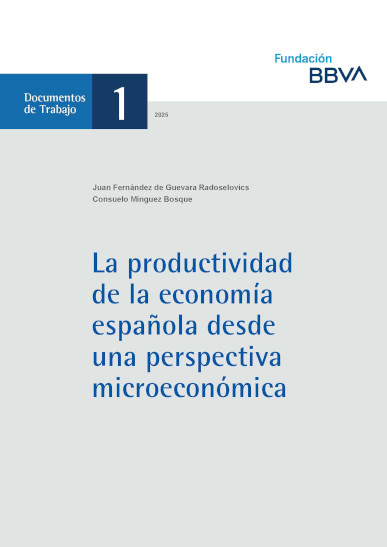
PublicationWorking Papers1/2025
La productividad de la economía española desde una perspectiva microeconómica
This document analyzes the total factor productivity (TFP) of a significant sample of firms, approximately 370,000 per year, from all sectors of activity during the period 2001-2021.
The data illustrate that there are significant and persistent productivity differences between firms, which are much greater than those observed across sectors. The evolution of productivity in all sectors of activity is defined by opposing forces: a general trend of declining productivity among firms belonging to the same industry, offset by 1) the most productive ones having gained market share — improvements in allocative efficiency — and 2) new companies emerging with higher productivity than those that disappear. There is also a very noticeable difference in the dynamic between frontier firms and the rest. While the productivity of leading companies, or frontier firms, has grown strongly, among the rest, it has remained stagnant or even decreased. In other words, there is a dual behavior that marks a clear divergence between the group of leading companies in the economy and the rest. A larger size is associated with greater productivity, although size is not an obstacle to being a highly productive firm, as the leaders include companies of all sizes.
The results of the study indicate that there are significant potential gains in Spain if a greater share of highly efficient companies can be achieved — if allocative efficiency improves. Therefore, in order to have more highly productive firms and to allow those that already exist to grow, it would be necessary to reduce the barriers to business growth, entry and exit, and to ensure that inefficient and unviable companies exit the market.
